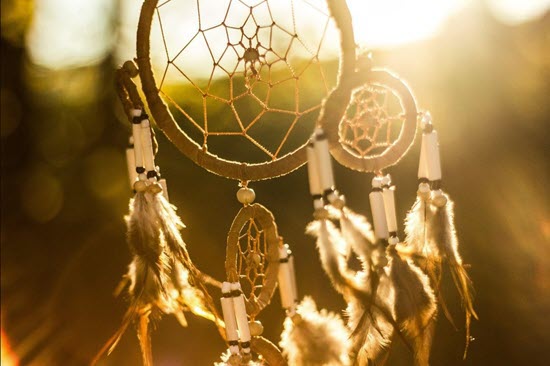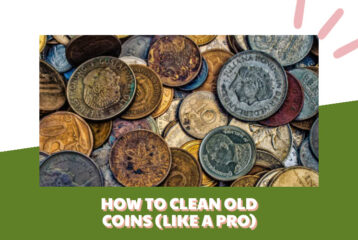Dreamcatchers are attractive and unique decorations that have deep spiritual meanings. When properly maintained, they should last for many years without needing replacement.
It is important to know how to clean a dreamcatcher to ensure that it doesn’t get excessively dirty or dusty.
Thankfully, knowing how to clean a dreamcatcher is probably easier than you think.
In This Article
Can You Clean a Dreamcatcher?
Yes, you can clean a dreamcatcher in a few different ways.
- There is a wet method for how to clean a dreamcatcher that includes soaking it in water
- There’s also a dry method that doesn’t use water at all.
The methods that you choose will vary based on a few different factors, including which materials are used in your dreamcatcher. It also varies depending on what decorations you add, such as feathers, beads, or even silk lace.
What is the Best Way to Clean a Dreamcatcher?
Wet Method: If possible, it is best to clean your dreamcatcher with water because it can break apart dirt and other stains.
Dry Method: However, if your dreamcatcher has leather or feather decorations, use the dry method. While you can remove feathers from your dreamcatcher if you want to use the wet method, it is best to keep it intact as much as possible.
How to Clean a Dreamcatcher
When it comes to how to clean a dream catcher, the two most common methods for cleaning a dreamcatcher vary slightly but can produce a great result when used properly. Choose the methods below based on the materials used in your dreamcatcher and follow the steps to clean your dreamcatcher properly.
Wet Method Steps
The wet method uses a simple combination of salt and water to clean a dreamcatcher.
- Fill up a bowl with warm water and add a teaspoon of salt to create a simple cleaning solution
- Place the dreamcatcher in this solution for 15-30 minutes to break apart any stains and dirt
- Remove the dreamcatcher and turn on the warm water on your sink to create a steady flow
- Carefully scrub the dreamcatcher under the water with a soft rag to break apart dirt
- Pat the dreamcatcher with a paper towel to remove excess water from its surface
- Hang it up to air dry before using it again, waiting several hours before replacing it
Dry Method Steps
When your dreamcatcher has feathers or other sensitive materials, use these steps:
- Fill a small plastic bag with baking soda or salt and put the dreamcatcher inside
- Shake the bag slightly to get the powder throughout the dreamcatcher
- Let the bag sit overnight to remove mold and other debris from the dreamcatcher
- Take the dreamcatcher out of the bag and shake it or lightly vacuum it
- Repeat this step until your dreamcatcher is free or odors, dirt, and mold
What is a Dreamcatcher?
A dreamcatcher is a beautiful decoration that uses natural or man-made materials to create a simple hoop with thread fibers throughout the hoop. Dreamcatchers may use a bent stick to create a hoop and then tie the ends together to keep the hoop’s shape. Then, thread is wrapped around the branch to produce a tight web that can be decorated with feathers and beads to create an attractive look.
Dreamcatchers are a very popular decoration in many parts of the world, particularly in areas near Native American cultures. They originate from Native myths and are one of the most commonly shared elements among various tribal religions. Dreamcatchers not only symbolize oneness and spiritual connection but are said to have a powerful spiritual purpose for many tribes.
In many Native American tribes, a dream catcher is a handmade willow hoop woven into a web or literally, a net. They can include feathers and beads, and they’re traditionally suspended on cradles as a form of armor and protection. Dream catchers are widely viewed as a symbol of oneness among numerous indigenous cultures and tribes.
How Does a Dreamcatcher Work?
While skeptics will say dreamcatchers do nothing but look attractive, they have a deep spiritual significance to many cultures. They originated in Native cultures throughout America, including the Hopi and Navajo religions and traditions. In the Hopi myth, the Spider Grandmother created all of humankind and is related to Gaia, or Mother Nature. The Spider Grandmother is also the protector of all humans.
Her role is not only to create and protect humans, but to also help young infants and children grow and thrive. Natives believed that building dreamcatchers honored her memory and brought positive energy into their lives. The unique web-like nature of the dreamcatcher is said to resemble the great web the spider grandmother wove to connect all humanity spiritually together.
When hung over your bed, a dreamcatcher is said to filter out negative energy or spirits (nightmares) and keep them from your dream world. The web lets in good dreams and helps you learn from your unconscious mind. Native tradition states that the dream world is spiritual and our closest connection to the gods. As a result, a dreamcatcher is said to heighten your connection to this realm and improve your positive energy.
Where Should a Dreamcatcher Be Hung?
Dreamcatchers can be hung anywhere that you sleep, including in your bedroom or even a living room if you like napping on your couch or in an armchair. Most people will hang their dreamcatcher over where they sleep, such as directly over their heads in their bedroom.
Typically, you can hang them at any level to achieve benefits, though putting them closer to your head is considered better.
That said, you can usually hang a dreamcatcher anywhere in your room if you want. They’re a good-luck charm and are said to bring good energy to your life wherever they are hung. Though hanging them over your bed is said to bring the best results for dreaming, you can put them in your living room, kitchen, or even your entryway to draw positive energy into your life from multiple sources.
Frequently Asked Questions
A good dreamcatcher can last for many years as long as you take good care of it and avoid putting strain on its body. Many people keep the same dreamcatcher for their whole life, occasionally cleaning it to get rid of any dirt or stains on its body.
While you can keep a dreamcatcher for many years or even your whole life, you may want to change it periodically. Most spiritualists say that you should change your dreamcatcher if you start experiencing nightmares and need a change in your sleep schedule.
A feather falling off of a dreamcatcher could symbolically represent a nightmare trying to attack the dreamcatcher to invade your dreams. You can replace the feather after performing a smudging ritual to cleanse the room and the dreamcatcher of any bad spiritual energy.
A dreamcatcher is considered a good charm and doesn’t necessarily have to be hung over a bed. While many people hang them over their bed to catch good dreams and filter out nightmares, they look nice in any areas and can be hung wherever you like in your bedroom.
You can hang a dreamcatcher wherever you like, but they are often best when hung in areas where you spend a lot of time. That’s because they can catch positive energy and focus it to you more effectively when they’re close to you often, such as hanging above your bed while you sleep at night.
According to dreamcatcher myths, these lucky charms filter out nightmares from a person’s sleep cycle and prevent them from attacking a person. This mythology considers dreams and nightmares as positive and negative spirits, respectively.
Most myths surrounding dreamcatchers state that sunlight helps to activate this charm and make it more effective. However, it doesn’t have to be in sunlight and won’t be while you are sleeping at night, when it is supposed to be filtering your dreams.
When you start experiencing nightmares while using a dreamcatcher, it may have stopped working for you. While fixing or cleaning the dreamcatcher may help it work better, including bathing it in sunlight, you may need to replace it if it stops working for good.
Dreamcatcher colors are very symbolic and can vary depending on the Native culture that creates them. Most agree that white dreamcatchers are the best because they are associated with positive energy, which helps stop nightmares from attacking a person.
Some cultures claim that black dreamcatchers are positive and can stop negative energy, like nightmares, from entering a person’s dreams. Other myths claim that black dreamcatchers attractive negative energy and represent grief, evil, and death.
Final Thoughts on How to Clean a Dream Catcher
Dreamcatchers are fascinating items with a long history and a unique spiritual significance to many people and cultures. Thankfully, the question of how to clean a dream catcher is an easy one to answer.
The cleaning methods that we discussed can give your dreamcatcher the TLC that it needs to last you for many, many years.
More Cleaning Tutorials:






